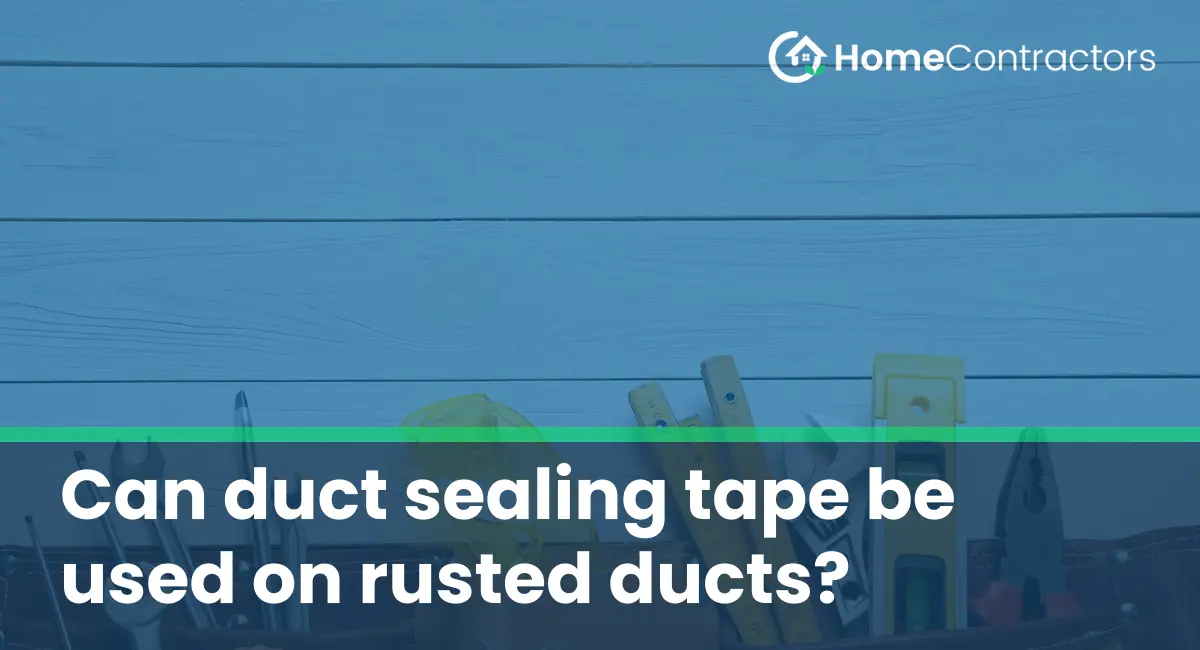In this article, we will explore this question and provide insights into the suitable methods for sealing rusted ducts.
Understanding Rust Formation in Ducts
Before determining the feasibility of using duct sealing tape on rusted ducts, it is important to understand the formation and impact of rust. Rust occurs when iron, in the presence of oxygen and moisture, undergoes a chemical reaction called oxidation. Over time, this oxidation process leads to the formation of iron oxide or rust. Rust not only weakens the structural integrity of the ducts but also creates pockets of air leakage, compromising the efficiency of HVAC systems. Moreover, rust particles can contaminate the air and pose health risks to occupants.
The Challenges of Sealing Rusted Ducts
When it comes to sealing rusted ducts, several challenges arise due to the nature of rust. Firstly, rust can eat away at the metal, causing the surface to become uneven and compromised. This makes it difficult for traditional sealing methods, such as duct sealing tape, to provide a secure, airtight seal. Additionally, rust can act as a barrier between the tape and the surface, preventing proper adhesion. Lastly, the tape may not adhere well to rough, uneven surfaces, further reducing its effectiveness.
Alternate Solutions for Sealing Rusted Ducts
Instead of relying solely on duct sealing tape, HVAC professionals have developed alternate solutions that are better suited for sealing rusted ducts. These methods aim to eliminate air leakage, improve energy efficiency, and minimize health risks associated with rust contamination.
1. Duct Cleaning and Coating
One effective approach is to clean the rusted ducts thoroughly and then apply a specialized rust-inhibiting coating. The cleaning process removes loose rust particles, ensuring a smooth surface for better adhesion. Once the ducts are clean, a rust-inhibiting coating is applied to prevent further rust formation. This coating also acts as a sealant, closing any gaps or leaks in the rusted areas. Not only does this method provide a durable and long-lasting seal, but it also helps extend the lifespan of the ducts.
2. Duct Encapsulation
Another solution for rusted ducts is encapsulation. This involves covering the entire duct surface with an impermeable material, such as a liquid-applied membrane or mastic. The encapsulation creates a barrier between the rust and the surrounding air, effectively sealing any leaks and preventing further rust formation. It is important to note that encapsulation should only be performed after thorough cleaning and inspection of the ducts. This method ensures a secure seal without relying on adhesion to the rusted surface.
While duct sealing tape can be an effective tool for sealing air leaks in ducts, it may not provide optimal results when used on rusted ducts. Rust compromises the surface integrity and adhesion capabilities of the tape, making it challenging to achieve a reliable, airtight seal. However, alternate solutions such as duct cleaning and coating, as well as duct encapsulation, offer more effective ways to seal rusted ducts. These methods not only address the existing rust but also provide long-term protection against further rust formation. Consulting with HVAC professionals knowledgeable in duct repair and rehabilitation is crucial in determining the most suitable solution for rusted ducts. Remember, effectively sealing rusted ducts is essential to maintain a healthy indoor environment and optimize energy efficiency.
